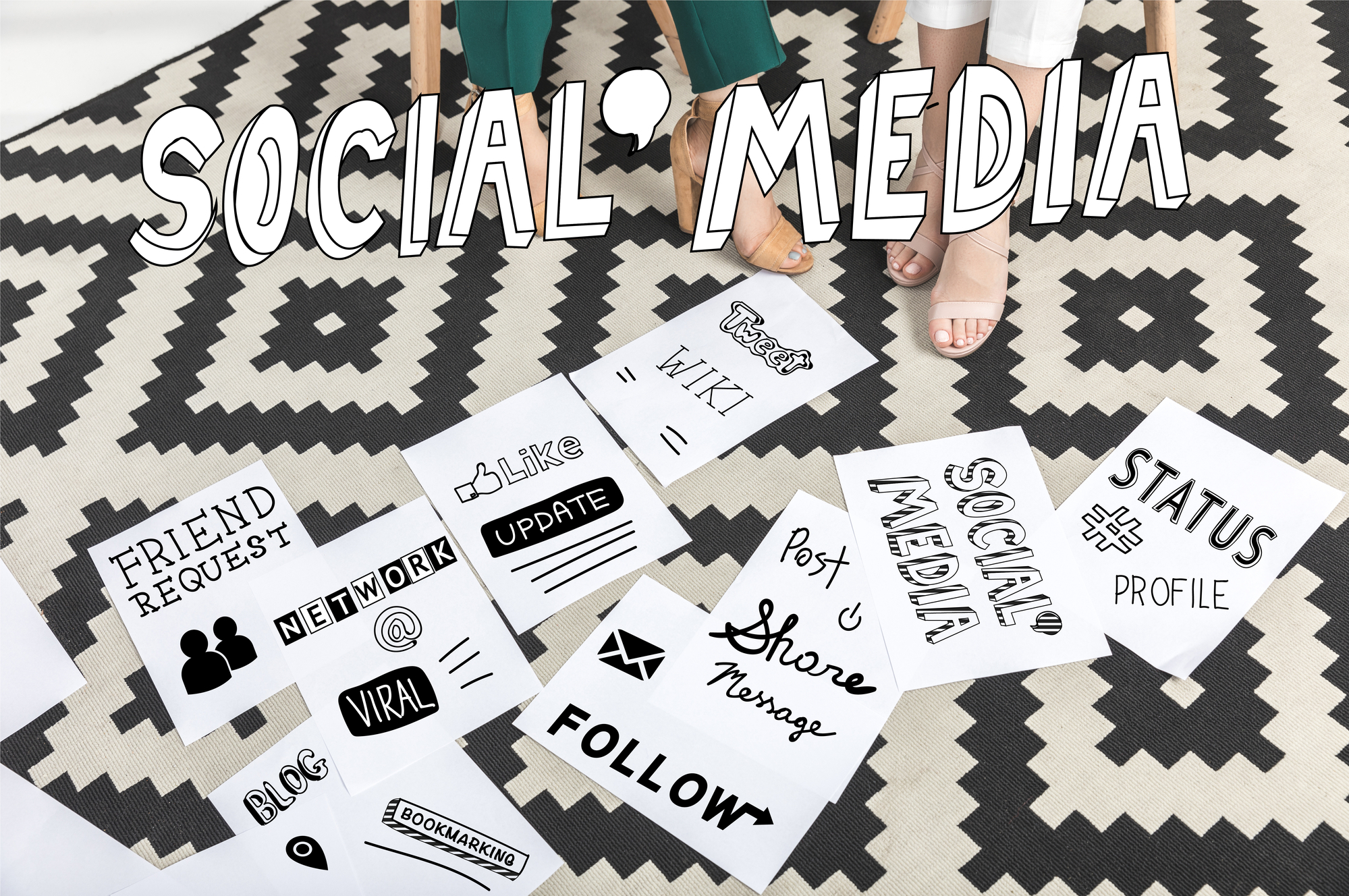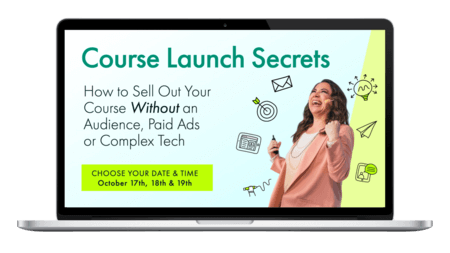Ready to kickstart your email marketing journey?
This beginner-friendly guide breaks down email marketing into five simple steps. It’ll give you a clear path and practical advice for connecting with your audience, building relationships and growing your business.
And we’ll start with the big one…
1. Choose an Email Marketing Platform

Picking the right email marketing platform is like choosing a good pair of shoes—it must fit well and support your journey. Don’t worry; you don’t need to be tech-savvy to make a good choice.
Let’s explore three solid options that cater to different needs and skill levels.
MailerLite
If you’re starting out or on a tight budget, MailerLite is a great free option. It’s known for its user-friendly interface, which makes it easy for beginners to create attractive emails with no design experience. The drag-and-drop editor is intuitive, allowing you to craft professional-looking emails quickly.
MailerLite offers a generous free plan that lets you manage up to 1,000 subscribers and send 12,000 emails per month.
You can set up basic email campaign automations, like welcome sequences, to greet new subscribers automatically. Plus, all their email templates are mobile-friendly, so your emails look great on smartphones and tablets.
While the free plan is excellent for beginners, remember that as your email list grows, you might need to upgrade to access more advanced features.
Kit (Formerly ConvertKit)
Kit has gained popularity among bloggers and content creators for good reason. While it comes with a higher price tag than MailerLite, it offers robust features that can grow with you as your skills improve.
One of Kit’s standout features is its powerful segmentation capabilities. You can easily tag subscribers based on their actions or interests, allowing you to send more targeted, relevant emails.
The platform also excels at email automation. Its visual automation builder allows you to create complex email sequences, making it easy to map out sophisticated email flows.
Kit also offers tools to create landing pages and sign-up forms.
ActiveCampaign
For those ready to dive deep into email marketing, ActiveCampaign is a top contender. It offers advanced features for sophisticated email strategies.
ActiveCampaign stands out with its customer relationship management (CRM) integration. This can be a game-changer if you use email marketing for sales or lead nurturing.
The platform also uses AI to provide insights, such as suggesting the best times to send emails for maximum engagement.
One of ActiveCampaign’s strengths is its split testing capabilities. You can test different versions of your emails to see what resonates best with your audience.
The platform also provides detailed reporting for deep insights into your emails’ performance.
How to Choose?
Selecting the right email marketing service can feel overwhelming, but don’t worry.
Start by assessing your needs. Think about the size of your current email list and your goals. Are you looking to nurture leads, sell products or keep in touch with your audience?
Next, consider your technical skills and how much time you have to learn a new platform. If you’re not tech-savvy, prioritize platforms with excellent customer support and user-friendly interfaces.
It’s also wise to think about growth. Will this platform scale with your business? Can you easily upgrade or switch to a different plan as you grow?
Most platforms offer free trials, so take advantage of these. Create a test email and try out the features. Pay attention to how intuitive the interface feels to you. Also, check if the platform integrates well with your other tools, like your website or CRM.
Don’t forget to look at the reporting features. Check what data the platform provides and how easily you can track opens, clicks and conversions.
Remember, there’s no perfect platform for everyone.
The best choice is the one that meets your current needs and budget while allowing room for growth.
So don’t get paralyzed trying to make the “perfect” choice. Pick one and get started. You can always switch later if your needs change.
2. Create a Really Good Lead Magnet

Now that you’ve chosen your email marketing platform, it’s time to focus on growing your list.
But people don’t just hand over their email addresses for free. You need to offer something valuable in return and that’s where a lead magnet comes in.
A lead magnet is a free resource you offer to potential subscribers so they’ll give you their address. This “bait” attracts your ideal customers and gives them a taste of the value you provide.
However, not all lead magnets are created equal. Let’s learn how to make one that works.
Understanding Your Audience
The first step in creating a killer lead magnet is understanding your audience.
What problems are they facing? What keeps them up at night? Your lead magnet should address a specific pain point or answer your ideal customer’s burning questions.
For example, your audience might struggle with finding time to work out if you’re a fitness coach. A lead magnet like “5 Effective 10-Minute Workouts for Busy Professionals” could appeal to them.
Choose the Right Format
Lead magnets come in many forms. The key is to choose a format that best delivers the solution to your audience’s problem. Some popular formats include:
- PDF guides or ebooks
- Checklists or cheat sheets
- Video tutorials
- Templates or swipe files
- Free trials or samples
- Quizzes or assessments
Consider what format would be most helpful and easiest for your audience to consume.
A video tutorial might be best if you’re teaching a complex process. For quick tips or strategies, a PDF checklist could do the trick.
Deliver High Value
Your lead magnet should provide real, actionable value. It’s often your potential customer’s first impression, so make it count. Don’t be afraid to give away some of your best stuff. This builds trust and positions you as an expert in your field.
However, keep it focused. A common mistake is cramming too much information into a lead magnet. Remember, you’re solving a specific problem, not writing a comprehensive guide to everything in your industry.
Make It Easy to Consume
Attention spans are short. Your lead magnet should be easily digestible.
For written content, use short paragraphs, subheadings and bullet points to break up the text. For videos, keep them concise and to the point.
Also, make sure your lead magnet is visually appealing. A polished look adds perceived value to your offer.
Create an Attention-Grabbing Title
Your lead magnet’s title is like the subject line of an email; it determines whether people will be interested enough to download it. Make it clear, specific and benefit-driven.
For instance, “Social Media Tips” is vague and unexciting. However, “10 Instagram Hacks to Double Your Followers in 30 Days” is specific and promises a clear benefit.
3. Leverage Pop-Ups and Optin Forms
It’s time to showcase it to your website visitors. This is where pop-ups and opt-in forms come in. These tools are essential for converting your website traffic into email subscribers.
Let’s explore how to use them without annoying your visitors.
Understanding Pop-Ups and Opt-in Forms
Pop-ups are windows that appear over your website content, while opt-in forms are embedded directly into your web pages. Both serve the same purpose; however, they each have strengths and ideal use cases.

Pop-ups are attention-grabbing and can significantly boost your conversion rates. They’re perfect for making a bold offer or highlighting a time-sensitive promotion.

Optin forms are less intrusive, and you can strategically place them throughout your site for ongoing lead generation.
Choosing the Right Tool
You’ll need a dedicated tool to implement pop-ups and opt-in forms effectively.
Two popular options are OptinMonster and BDOW (formerly Sumo). These platforms offer a range of features to help you create, customize and optimize your forms.
OptinMonster is known for its advanced targeting and triggering options. You can create pop-ups that appear based on user behavior, such as exit intent (when someone is about to leave your site) or after scrolling a certain percentage of the page.
BDOW offers a suite of tools beyond pop-ups and forms. It’s an excellent all-in-one option for boosting your website’s overall performance.
Strategic Placement
Where you place your forms can impact their effectiveness. Consider these placement strategies:
- Header or navigation bar
- End of blog posts
- Sidebar
- Footer
For pop-ups, timing is key.
Avoid showing them immediately when someone lands on your page. Instead, wait until they’ve had a chance to engage with your content.
Exit-intent pop-ups, which appear when someone is about to leave your site, can be particularly effective.
4. Craft an Amazing Onboarding Sequence

Now, it’s time to welcome new subscribers and build relationships with them. This is where your onboarding sequence comes into play.
An onboarding sequence is a series of automated emails new subscribers receive after joining your list. It’s your chance to make a great first impression, deliver on your promises and set the stage for a lasting relationship.
Start with a Warm Welcome
Your first email should go out immediately after someone subscribes. This email has two main purposes:
1. Deliver your lead magnet
2. Welcome the subscriber to your community
This welcome email should be short, friendly and to the point. Thank readers for subscribing, provide clear instructions on accessing their lead magnet and give them an overview of what they can expect from you in the future.
Map Out Your Sequence
A good onboarding sequence typically runs for 7 to 21 days, depending on your goals and the nature of your business.
This email campaign is not the time for hard selling.
Instead, focus on providing tons of value. Share your best tips, offer exclusive content or provide in-depth insights into topics your subscribers care about.
By delivering value (for free), you build trust and position yourself as an expert in your field. This lays the groundwork for future conversions.
Tell Your Story
People connect with stories. Use your onboarding sequence to share your brand’s story or your personal journey. This will help create an emotional connection with your subscribers and give them a reason to root for your success.
Be authentic and vulnerable. Share your struggles and your triumphs. This humanizes your brand and makes you more relatable.
Set Expectations
Use your onboarding sequence to set clear expectations for your ongoing relationship. Let your email subscribers know:
- How often they’ll hear from you
- The content they can expect
- How they can get in touch with you if they need help
This helps prevent unsubscribes down the line and ensures you’re attracting the right subscribers who are interested in what you offer.
5. Give, Give, and Give (Then Ask)

Now that you’ve nurtured your subscribers through your onboarding sequence, it’s time to settle into a long-term email strategy.
Try the “Give, Give, Give, Then Ask” approach popularized by Gary Vaynerchuk in his book “Jab, Jab, Jab, Right Hook.” It’s about providing value before asking your audience for anything.
In email marketing terms, here’s what this approach means:
Give — Provide valuable, free content to your subscribers.
Give — Offer more valuable content, no strings attached.
Give — Continue to deliver value without expecting anything in return.
Ask — After providing significant value, make an offer or request.
This strategy is based on the principle of reciprocity.
By consistently providing value to your subscribers, you build goodwill and trust.
When you finally make an ask, your audience is more likely to respond positively because of the free value you’ve provided.
Giving can take many forms. Here are some ideas:
1. Educational content
Share tips, how-to guides, or industry insights.
2. Entertainment
Tell stories, share jokes or provide lighthearted content related to your niche.
3. Inspiration
Share motivational quotes, success stories or case studies.
4. Free Resources
Offer downloadable templates, checklists or tools.
5. Exclusive content
Provide subscriber-only articles, videos or podcasts.
When and How to Ask
After you’ve provided value consistently, then you make an ask.
When you make your ask, be clear and direct. Explain the value of what you’re offering and why it applies to your subscribers. And always tie it back to the free value you’ve been providing.
The “Give, Give, Give, Then Ask” approach is a long-term strategy. But it’s a solid method for building a loyal, engaged audience.
Your Email Marketing Journey Begins
Congratulations! You’ve learned the five essential steps to kickstart your email marketing campaign.
What’s your first move going to be?
Share with us in the comments below!
Before you go…
One of the best online businesses to create right now?
An online course business!
That’s why I wanted to share my brand-new Guide on how to create a course people buy, binge and bring up over coffee 🙂
Inside, you’ll:
- Unlock the power of “experiential courses” to grab attention, drive action and skyrocket your sales (and repeat sales!)
- Leverage the hidden psychology that drives people to buy and complete courses (this has created millions in sales in hundreds of niches)
- Learn the ONE thing that AI can NEVER compete with that virtually guarantees your course success
- Discover my unique “no-ask” referral method that will have your students raving about you to their friends
- Plus, the 10 “Anti-Experiences” to AVOID at all costs (unless you want your students to give up and walk away!)
This Guide is yours FREE — it will walk you through the only way you should create an online course today…
If you want your students to actually engage, take action and get results!




























Leave a Comment